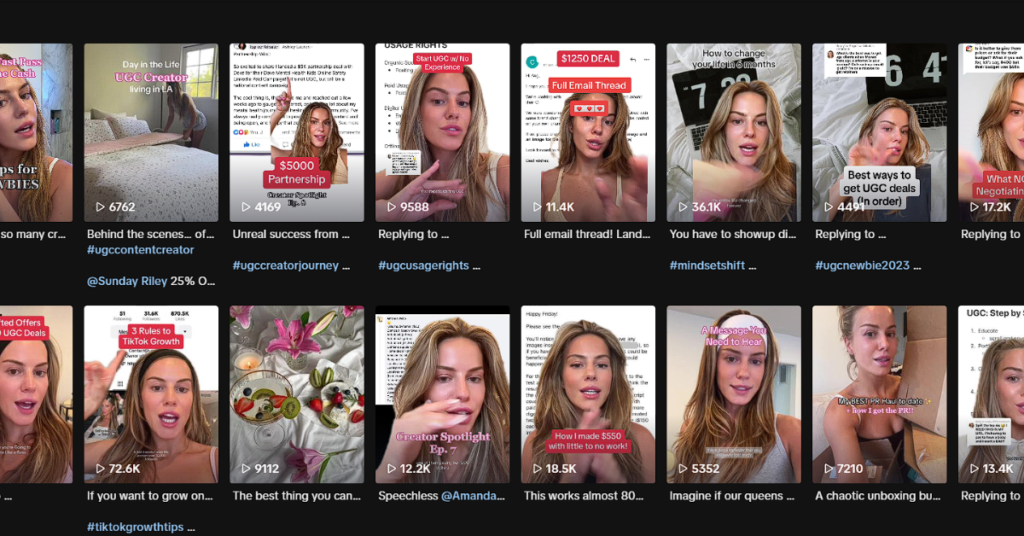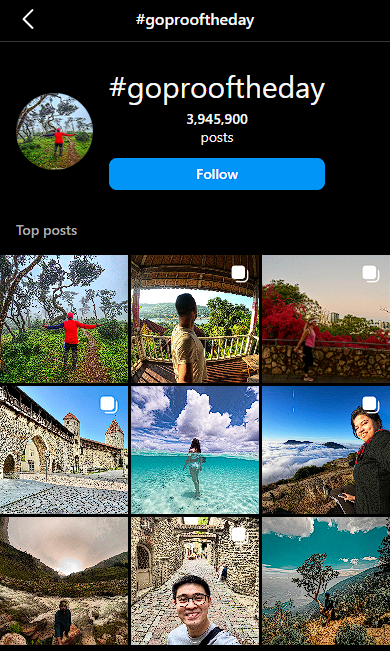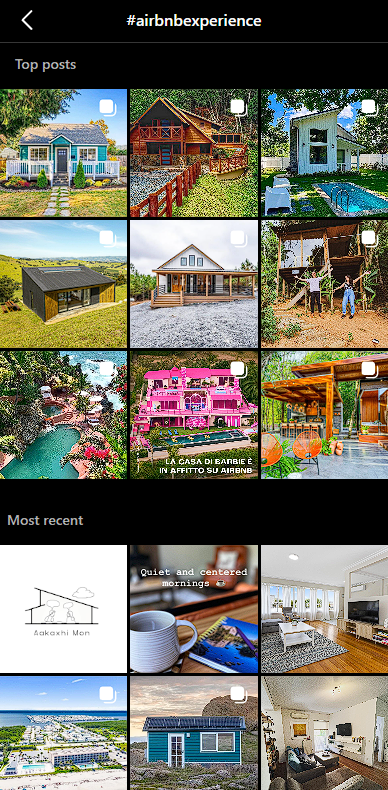User-generated content (UGC) has become an incredibly powerful tool for businesses and marketers over the past decade. With the rise of social media and other online platforms, customers and users now have more opportunities than ever to create and share content related to brands, products, and services.
In this comprehensive guide, we’ll explore what exactly user-generated content is, why it’s so valuable for brands, and how you can leverage UGC for your own business and marketing efforts.
Key Takeaways
- User-generated content comes from unpaid creators like customers and influences, not directly from brands. It offers more authenticity and trust.
- UGC has exploded across social media and review platforms, becoming very influential in purchase decisions.
- Consumers trust UGC-like reviews and social recommendations far more than branded content and traditional ads.
- Encouraging and optimizing UGC should be a priority for modern brands. Various tactics can incentivize participation.
- Top UGC platforms include Instagram, Facebook, Youtube, Twitter, TikTok and review sites like Yelp.
- Analyze top-performing content and creators to maximize your UGC strategy over time.
- Repurpose quality UGC widely across your marketing channels. Credit the creator and seek permission as needed.
What is User Generated Content?

User-generated content refers to any type of content that is created and shared by unpaid creators or contributors. Compared to content created directly by brands and businesses, UGC is generally seen as more authentic, trusted, and influential since it’s created by real customers or users.
Some of the most popular types of user-generated content include:
- Social media posts – Photos, videos, reviews, thoughts, and any other content users post on social platforms like Instagram, Facebook, Twitter, Youtube, TikTok etc. This makes up a massive amount of UGC today.
- Reviews and Ratings – Product, service, or business reviews left on platforms like Yelp along with star or numeric ratings.
- Forums and Communities – People discussing brands, products, or issues in online forums, communities, or review websites.
- Blogs – Customers or users writing blog posts related to products they use or brands they love.
- Testimonials and References – Positive feedback is given to brands or businesses that they often feature on their websites.
The key element of UGC is that it offers authenticity, credibility and a unique perspective that brands simply can’t replicate on their own. While brands spend huge amounts creating polished content that shows themselves in the best light, UGC cuts through the promotional noise in a way that feels more raw, transparent and honest.
The Rise of User-Generated Content
User-generated content on social media and other platforms has exploded over the past 10-15 years. Here are some stats that highlight the massive growth:
- As of 2022, the average daily social media usage of internet users worldwide amounted to 151 minutes per day (Statista)
- Consumers are 71% more likely to make a purchase based on social media referrals. (Hubspot)
- User-generated reviews are trusted by consumers more than any other form of content. (PRNewswire)
- About 72% of brands believe UGC helps them engage customers and build brand trust which results in a good connection with their customers. (Taggbox)
Several factors have led to the rapid increase in user-generated content in recent years:
- Growth of Social Media – Facebook, Instagram, Youtube and other platforms make it incredibly easy for anyone to create and share photos, videos, thoughts or reviews. Over 3 billion people are now on social media worldwide.
- Rise of Influencers – Influencers on platforms like Instagram and TikTok have made creating and monetizing UGC a whole new industry. Followers look to influencers for authentic recommendations.
- Improved Technology – Smartphones with high-quality cameras, better mobile apps, and faster internet connections have made creating great-looking UGC possible for everyone.
- Younger Generations – Millennials and Gen Z tend to trust recommendations from other consumers over branded content and traditional advertising. They value authenticity.
- Declining Trust in Brands – Consumers are more sceptical than ever of promotional brand and business content after being overwhelmed with marketing messages. UGC fills this trust gap.
As more consumers turn to platforms like Instagram, Facebook and Youtube for inspiration, opinions and recommendations, user-generated content will only become more important for brands looking to reach their audience.
Why User-Generated Content Is So Valuable?

AngelaWells (@ugcang)
Now that we’ve looked at the definition and growth of user-generated content, let’s explore some of the reasons why UGC is so valuable:
Builds Trust and Credibility
Numerous studies have shown that potential customers find reviews, testimonials and other UGC far more credible than content directly from brands. When real people share their honest thoughts and experiences with a product or business, it establishes trust in a powerful, convincing way.
Provides Social Proof
User-generated content offers vital social proof that a product, service or brand delivers on what it promises. Whether it’s seeing a positive YouTube review or happy customers on social media, UGC shows real people using and benefitting from the product.
Improves SEO and Discoverability
User-generated content helps boost SEO and visibility since it lives on external sites. More natural backlinks and mentions from UGC increase domain authority and help search engines understand what a brand does.
Generates Valuable Data and Insights
Smart brands pay close attention to UGC to gather useful customer data and insights. Tracking and analyzing user-generated content reveals what people like best about a product, what could be improved, and what features they want next.
Drives Word of Mouth
Satisfied, enthusiastic customers who create UGC focused on a brand essentially drive word-of-mouth marketing. Their content and recommendations influence the opinions of their networks.
Provides Free Marketing
Customers and fans promoting a brand through their own social media accounts, videos, blogs etc provide tremendous value. UGC results in free marketing based on authentic voices.
Little Production Cost
Producing engaging branded content can be very expensive and time-consuming compared to UGC. User-generated content in purely organic and requires little work from the brand.
For all these reasons, marketers consider user-generated content as one of the most effective tactics when it comes to driving conversions, sales and loyalty.
How Brands Can Encourage User-Generated Content
Simply having an active social media account is no longer enough. Brands that want to maximize user-generated content should utilize some of these approaches:
- Run Contests and Campaigns – Contests that encourage social shares and UGC creation result in branded hashtags and expanded reach. Contest prizes can include your products or gift cards.
- Utilize Influencers and Brand Advocates – Loan products or offer discounts to influencers in exchange for reviews and social content. Also, build up micro-influencers and dedicated brand advocates.
- Interact and Engage with Reviewers – Actively respond to online reviewers and UGC creators. Thank them publicly and answer any questions. This motivates them to stay involved.
- Feature Top UGC On Your Platforms – Repost great UGC on your website and social pages while tagging the creator. People love recognition.
- Make Participation Fun and Simple – Ensure branded hashtags are easy to remember and participate in. Also, provide user-friendly guidelines for submitting UGC.
- Give Away Free Products – Run contests where entrants must post a review of your product on social media to qualify. The prize is sending them a free product.
- Simplify Photo Taking – For tangible products, make them easily “Instagrammable” or provide suggestions on how to photograph them (like including recognizable branding in the pic).
- Feature UGC In Ads and Marketing Materials – Get permission to re-use their UGC content in your ads, website, commercials etc. This increases authenticity.
Overall, the more you encourage participation, provide incentives and make UGC creation simple – the more genuine branded content you’ll earn from real satisfied customers.
Best Practices for Optimizing UGC
Here are some additional tips to ensure you fully leverage user-generated content to achieve your marketing goals:
- Proactively Ask For UGC – Don’t just hope customers create it. Provide CTA’s and give them specific ideas of content you’d love them to generate.
- Cite Sources – Always credit the creator and link to their profile or original content. People want recognition.
- Secure Rights to Reuse Content – Get UGC creators to consent to let you reuse their content in future marketing. Offer incentives in return.
- Keyword Optimize UGC – When featuring UGC on your platforms, surround it with relevant keywords and optimize it for SEO.
- Moderate For Quality – Lightly moderate UGC shared on your channels to remove anything obscene while maintaining authenticity.
- Analyze and Track Performance – Use analytics to identify your top-performing UGC creators and types of content. Find what resonates.
- Repurpose Widely – Don’t just post UGC to your social channels. Also integrate it into your blog, emails, ads and website. Expand reach.
- Give Access and Tools – Provide users access and guidance on how to easily upload and share UGC on your platforms. Remove friction.
- Reward Top Advocates – Identify and nurture relationships with UGC creators who promote you frequently. Provide perks and prizes.
Focus on building win-win relationships with UGC creators rather than exploiting or manipulating their work. Transparency and permission ensure they’ll want to support your brand in the future.
Top Platforms Driving User-Generated Content

Now let’s explore some of the leading platforms and networks where users generate the highest volume of branded content and engagement:
1. Instagram
With over 1 billion active monthly users, Instagram is one of the most important platforms for brands when it comes to user-generated content. The highly visual nature makes it perfect for sharing photos and short videos that showcase products and businesses in lifestyle situations. Successful brands encourage and re-share large volumes of UGC from their followers, customers and fans.
2. Facebook
As the largest social network, Facebook offers a diverse ecosystem for user-generated content. Brands leverage Facebook for sharing reviews, images, videos, and recommendations and driving engagement in Facebook Groups related to their industry. Facebook recently launched Reels – short-form multi-clip videos – which are poised to capture more branded video content.
3. Youtube
With over 2 billion monthly logged-in users, YouTube has become a top destination for influencers, vloggers and reviewers posting videos related to their favourite brands. “Unboxing” videos showcasing new products have exploded in popularity. Youtube also allows for embedding videos.
4. Twitter
While smaller than other social platforms, Twitter’s public nature makes it ideal for posting UGC that brands can interact with. Twitter is also frequented by journalists, bloggers, and industry influencers who can amplify positive UGC to large audiences. Brands can retweet great UGC from followers.
5. TikTok
TikTok has emerged as the breakout app for short-form video. Brands are leveraging the platform’s “challenges” feature to drive large volumes of user-generated content tied to branded hashtags. Authenticity is key on TikTok, making UGC perfect for reaching the core Gen Z user base.
6. Yelp, TripAdvisor & Review Sites
While not social networks, Yelp, TripAdvisor and similar crowdsourced review platforms are rich sources of user-generated content. Consumers trust these reviews as much as personal recommendations. Brands should proactively manage their profiles, engage with reviewers, and analyze feedback.
7. Blogs & Niche Sites
Bloggers and niche sites focused on topics like parenting, fashion or technology often feature reviews of new products. Having your brand covered or reviewed on an influential blog in your industry is extremely valuable word-of-mouth marketing.
8. Forums & Communities
Don’t forget about old-school forums and online communities like Reddit which still generate lots of reviews and discussions about brands. These close-knit communities are great for sourcing UGC targeted to your ideal audience.
As you can see, user-generated content can be cultivated both on social media as well as traditional sites and communities. Wherever your customers are already hanging out, you should aim to integrate UGC as part of the experience.
Examples of Effective User-Generated Content Campaigns
Let’s look at some real-world examples of brands running successful user-generated content campaigns:
Starbucks – #RedCupContest
Each holiday season Starbucks launches its red cup design contest, asking customers to submit their creative red cup art on Instagram using #RedCupContest. This generates thousands of festive user-generated photos every year which Starbucks repurposes in marketing materials.
H&M – #HMBalmainNation

For the launch of its major collaboration with Balmain, fashion brand H&M encouraged users to post their photos showing off the collection using the #HMBalmainNation hashtag. The campaign generated nearly 100,000 Instagram posts which amplified hype for the new line.
GoPro – #GoProOfTheDay

GoPro curates and features customer-submitted photos and videos every day using the #GoProOfTheDay hashtag. GoPro has featured over 3.9 million user-generated posts, increasing brand engagement and exposure. The UGC also ends up incorporated into GoPro’s marketing.
Airbnb – #AirbnbExperience

Airbnb encourages travellers to share beautiful photos of their Airbnb stays with the hashtag #airbnbExperience. These authentic experiences inspire potential guests to explore new destinations to book. Airbnb also repurposes this hashtagged UGC into promotional materials.
As you can see from these examples, effective UGC campaigns leverage influencers, have great branding, offer incentives for participation, and result in authentic customer content that can be reshared.
UGC Content Ideas to Inspire Customers
Here are some examples of specific user-generated content you can suggest, highlight and encourage to inspire customers and followers:
Photos and Videos:
- Using or unboxing your product
- Showcasing your product in their daily life
- User-generated styled product photos
- Lifestyle photos related to your brand
- Short reviews, testimonials or endorsements
- Responses to a branded hashtag challenge
Written Content:
- Blog reviews of your product or service
- Social media and website testimonials
- Responses and stories related to your brand
- Comments and participation in online brand communities
- Reviews and ratings on sites like Yelp and Amazon
Creative Content:
- User-generated designs, art and graphics showcasing your brand
- DIY tutorials featuring your products
- Original branded memes and funny shareable social content
- Fan art related to your business
- Parody videos related to your brand experience
Business Content:
- Small businesses showcasing the use of your product/service
- Brand partnerships created by followers
- PR coverage facilitated by brand advocates
- Crowdfunding projects related to your brand
- Business listings on directories mentioning your brand
The goal is to facilitate varied content that allows customers to express their own creativity and passion related to your company in an authentic way.
Expert Tips to Improve Your UGC Strategy
And here are some final pro tips for getting the most value from your user-generated content efforts:
- Set specific UGC goals and KPIs to track what content best supports your objectives. Are you driving awareness? Engagement? Conversions?
- Make UGC creation and submission as easy and accessible as possible. Provide an online intake form, reusable waivers, and clear guidelines.
- Strike a balance between showcasing your top brand advocates while also featuring diverse creators. Avoid playing favourites.
- When asking for UGC, provide clear direction on your brand messaging and guidelines. But leave room for creativity.
- Ensure you have a content mixing strategy, with UGC used alongside your other content. Don’t make your platforms 100% user generated.
- Reward and highlight UGC creators by sharing to your main social channels, sending gifts, or cross-promoting their own pages.
- Monitor UGC not just on your owned channels but wider social media for any branded content you can leverage.
- Analyze UGC performance over time and double down on what works. Test new initiatives against past successes.
- Be authentic. Never try to manipulate reviews and feedback or make UGC seem more positive than it is. Transparency matters.
- Provide an internal process and workflow for collecting UGC, getting rights secured, and disseminating content widely.
Final Thoughts
User-generated content represents a tremendously valuable opportunity for brands and businesses to connect with customers and drives real results. As more marketing shifts away from interruptive ads to authentic recommendations, UGC will only grow in importance.
By highlighting satisfied customers and their unbiased thoughts, brands can build credibility and trust. The more you incorporate quality user photos, videos, reviews and testimonials across your digital presence, the more potential leads you’ll convert.
We highly recommend developing a comprehensive UGC strategy to both encourage participation and fully leverage content in your marketing. Allocating part of your budget to UGC campaigns and community management will yield ROI.
When done right, user-generated content offers that social proof and personal recommendation that your audience craves. Meet them where they already are – on Instagram, Youtube, TikTok and review sites. The most successful brands don’t just market to their audience – they let the audience market for them.
User-generated content takes effort to continuously source, optimize and repurpose. But the long-term payoff for your brand visibility and trust is immense. Keep experimenting and learning from your UGC wins and losses.
With these tips and best practices, you’re well on your way to leveraging user-generated content to drive online and real-world impact. Feel free to reach out if we can ever assist with your UGC campaigns. Now get out there and start inspiring customers to share their love for your brand!
Frequently Asked Questions About User-Generated Content
What are some easy first steps to generate more UGC?
Some easy quick wins include running simple contests for free products in exchange for reviews, reposting quality UGC on your social channels to inspire more, asking micro-influencers in your niche to generate branded content, and leveraging UGC creation tools like Photoslurp or Stackla.
What legal right do brands have to reuse UGC?
You’ll want permission from the creator before reusing their user-generated content in your marketing. Many platforms like Instagram now allow easy licensing of UGC. Offer the creator a small incentive in exchange for waived rights.
What’s the best way to get reviews on sites like Yelp and Amazon?
Proactively reach out to purchasers asking if they’d be willing to leave an honest review. Feedback is more likely from recent customers. Never offer incentives just for positive reviews, as this can risk penalization. Always be polite and grateful for reviews.
Should businesses engage or respond to negative UGC?
Negative reviews and complaints are inevitable. It’s recommended to always calmly engage with the user, apologize for any issues and see if you can resolve their problem. Handled properly, other viewers will see your responsiveness.
How much budget should I allocate to UGC campaigns?
There’s no ideal percentage, as UGC content is voluntarily created by users. But it’s smart to invest in promotion, incentives and community management. Consider the value UGC brings in marketing and indirect sales. Any UGC budget should see ROI.
What are the best practices for attributing UGC I want to reuse?
Always credit the creator prominently. Mention their full name and link to their profile or original content if possible. Ask that they include your branded hashtags or handles as a condition of reuse rights. Watermarking can help prevent content theft.
Should I moderate UGC before sharing it on our channels?
Light moderation is recommended to remove any obscene or offensive content that could reflect poorly on your brand. But you want to maintain the authenticity of raw UGC, both positive and negative. Excessive moderation defeats the purpose.
